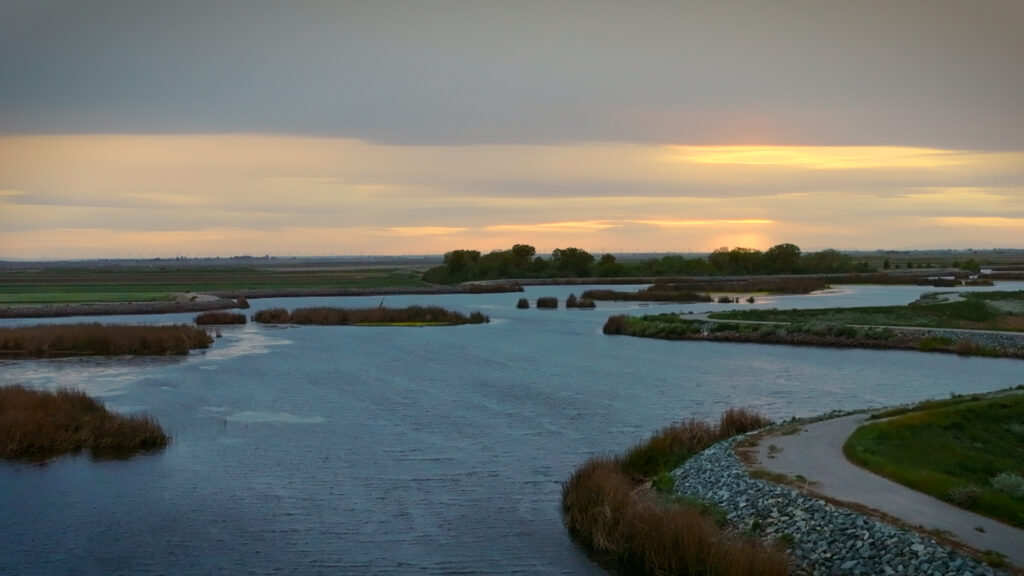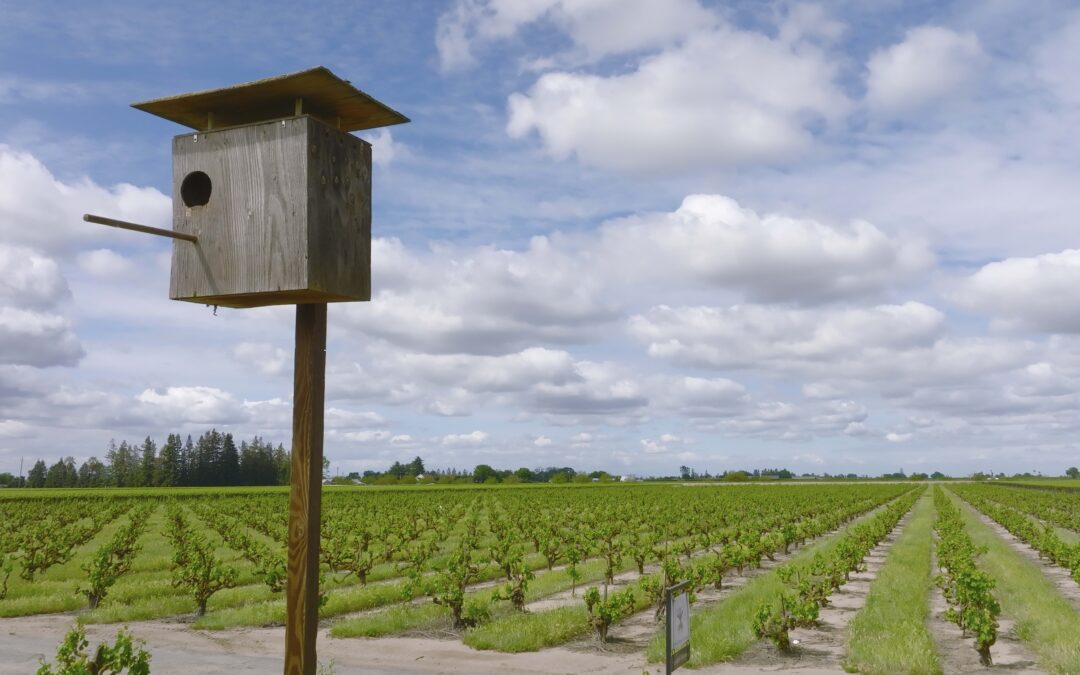MONDAY, OCTOBER 16, 2023. BY SONYA MILLER, DISTRICT CONSERVATIONIST, USDA NRCS.
The USDA Natural Resources Conservation Service (NRCS) in California announces Fiscal Year 2024 (October 1, 2023 through September 30, 2024) federal assistance opportunities for agricultural producers, including through the Environmental Quality Incentives Program (EQIP), and the Conservation Stewardship Program (CSP). The next USDA-NRCS EQIP application deadline is November 3, 2023. With ‘potential’ for another open application period in the spring of 2024.
“We are excited to support California’s producers with a historic investment in on-farm conservation this Fiscal Year,” said NRCS California State Conservationist Carlos Suarez. “With the addition of the Inflation Reduction Act, we will be investing approximately 50 percent more federal funding to help producers address their unique resource concerns and help them achieve their stewardship goals.”
Through EQIP, CSP, and the Inflation Reduction Act, more than $100 million is available for conservation practices and initiatives, including:
1. through the National Air Quality Initiative (NAQI) to assist farmers in replacing outdated
engines with new and cleaner-burning technology.
2. activities that support wildlife habitat creation and enhancement on farms and ranches.
3. NRCS and Bureau of Reclamation WaterSmart partner projects to help improve water infrastructure, delivery, and application on farms.
4. National Water Quality Initiative for targeted conservation actions to improve water quality in the Calleguas Creek and Salt River watersheds.
Application cutoff periods allow NRCS to screen and rank applications for those with the highest conservation benefits across California’s landscapes, including cropland, ranchlands, and private non-industrial forestlands. A second cutoff period may be scheduled in Spring 2024 as federal conservation funding is available.
EQIP provides financial assistance to agricultural producers to address natural resource concerns and deliver environmental benefits. These include improved water and air quality, improved irrigation efficiency, reduced soil erosion and sedimentation, forest restoration, and creating or enhancing wildlife habitat.
CSP provides producers to earn payments for actively managing, maintaining, and expanding conservation activities integrated within their agricultural operations. CSP enhancements like cover crops, ecologically-based pest management, and buffer strips help producers improve soil health while protecting water quality. Other CSP activities help sustain and increase pollinator and beneficial insect habitats in harmony with agriculture production on their land.
Applying for Assistance
NRCS California will be utilizing ACT NOW to process conservation applications for NAQI and Conservation Plan Activities ranking pools to deliver conservation faster. ACT NOW allows NRCS to immediately approve and obligate a ranked application. This means no longer having to wait for all applications to be reviewed and preapproved. Applications selected through ACT NOW will be batched and processed in the order received. Selections will be made on a weekly basis.
NRCS accepts conservation program applications year-round. State Technical Committees, composed of producers and partners, work with NRCS to set state-specific, ranking dates to evaluate applications for funding. These dates account for producer needs, and staff workload, and ensure potential participants have ample opportunity to apply. To find out more about our application process or to begin an application, please contact your local NRCS Service Center by visiting here.
Technical Assistance
NRCS offers conservation technical assistance at no cost to give producers personalized advice and information, based on the latest science and research, to help them make informed decisions. If a producer chooses to take the next step towards improving their operations, NRCS staff can work with them to develop a free, personalized conservation plan, with conservation practices that can help them reach their agricultural production and conservation goals.
The voluntary conservation plan defines and explains existing resources in a simple, easy-to-understand manner. Typically, the plan will include land use maps, soil information, an inventory of resources, engineering notes, and other supporting information. One benefit to landowners who work with an NRCS professional conservationist to develop a plan is an increased potential for participating in financial assistance programs which is a good first step in the overall process.
If you are interested in incorporating any of the following conservation practices next summer and beyond, with possible financial assistance, please call the USDA San Joaquin County Farm Service Agency by phone at 209.33.2124 Ext .3 or visit the office at 7585 S. Longe Street, Stockton, CA 95206 in person to apply.
1. Water savings irrigation systems
2. Irrigation water management system
3. Cover crop
4. Hedgerows
5. Nutrient or pest management strategies
6. Compost
7. Mulch
8. Orchard removal with soil incorporation
9. Road oil
10. Low dust harvesters
11. Prescribed grazing practices (cross fence, watering facilities, etc.)
12. Dairy improvements (concrete pads for silage/manure, pond lining, separators, digestors, etc.)
BIRDRETURNS-SANDHILL CRANE PROGRAM

Seeking farmers to provide habitat for cranes. Learn more and apply at birdreturns.org by noon TODAY, October 16, 2023, to create a short-term habitat for the BirdReturns-Sandhill Crane Program. The BirdReturns Program creates short-term habitats that migratory birds, including sandhill cranes, desperately need by paying farmers to flood their fields.
What is Required?
The Program requires post-harvest management and two habitat types:
-
- At least 50 acres of flooded habitat for a minimum of eight weeks
- At least 150 acres of harvested small grain fields must remain unflooded for at least six weeks
For more information, go to birdreturns.org or contact The Nature Conservancy with any questions:
-
- Billy Abbott at 530-228-1862, william.abbott@tnc.org
- Julia Barfield at 916-449-2852, jbarfield@tnc.org
- Jerred Dixon at 916-516-4011, jerred.dixon@cfrstaten.com
Have something interesting to say? Consider writing a guest blog article!
To subscribe to the Coffee Shop Blog, send an email to stephanie@lodiwine.com with the subject “blog subscribe.”
To join the Lodi Growers email list, send an email to stephanie@lodiwine.com with the subject “grower email subscribe.”
To receive Lodi Grower news and event promotions by mail, send your contact information to stephanie@lodiwine.com or call 209.367.4727.
For more information on the wines of Lodi, visit the Lodi Winegrape Commission’s consumer website, lodiwine.com.
For more information on the LODI RULES Sustainable Winegrowing Program, visit lodigrowers.com/standards or lodirules.org.


